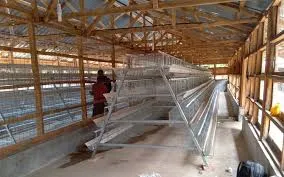Exploring Innovations in Feed Mixing Technologies for Enhanced Livestock Nutrition
ធ្នូ . 01, 2024 10:23 Back to list
Exploring Innovations in Feed Mixing Technologies for Enhanced Livestock Nutrition
Understanding Feed Mixers Essential Tools for the Animal Nutrition Industry
Feed mixers play a crucial role in the animal nutrition industry. These machines are designed to blend various feed ingredients uniformly, ensuring that livestock receive balanced nutrition. In recent years, the demand for efficient feed mixers has surged, driven by the growth in animal farming and the need for high-quality feed materials. This article delves into the importance, types, benefits, and considerations associated with feed mixers.
Importance of Feed Mixers
The primary function of a feed mixer is to combine different types of feed, such as grains, vitamins, minerals, and other additives, into a homogenous mix. The uniformity of the feed is critical, as any inconsistency can lead to nutritional imbalances in animals, negatively impacting their health and productivity. For instance, if certain nutrients are concentrated in specific parts of the feed, animals might not get their required daily intake, leading to suboptimal growth rates or health issues.
Moreover, feed mixers contribute to the economic efficiency of animal farming. By ensuring that feed is mixed correctly, farmers can minimize waste, reduce feed costs, and ultimately improve the profitability of their operations. Good feed quality directly correlates with better feed conversion ratios, meaning animals can achieve the desired weight and health with less feed.
Types of Feed Mixers
There are various types of feed mixers available, each designed to meet specific needs
. The most common types include1. Horizontal Feed Mixers These mixers feature a horizontal mixing chamber with one or more augers. They are known for their ability to handle large volumes of feed efficiently, making them ideal for larger farms or feed mills.
2. Vertical Feed Mixers Vertical mixers use a vertical auger to mix feed ingredients. They are suitable for smaller operations due to their compact size. They are very effective for materials that must be mixed thoroughly.
3. Batch Feed Mixers These mixers prepare feed in discrete batches. They are preferred in operations where different feed formulations are needed for various groups of animals, allowing for flexibility in production.
4. Continuous Feed Mixers Unlike batch mixers, continuous feed mixers constantly feed materials into the mixing chamber, maintaining a consistent output. They are ideal for large-scale operations where steady production is crucial.
Benefits of Feed Mixers
Investing in a high-quality feed mixer offers numerous benefits
feed mixers

- Consistency A well-functioning feed mixer ensures uniformity in feed composition, which is vital for animal health and productivity.
- Efficiency Modern mixers are equipped with advanced technologies that enhance mixing times and reduce labor. Automated systems can optimize ingredient additions and monitor mixing processes.
- Versatility Many mixers can handle a variety of feed types, making them adaptable to changes in feed formulations or ingredient availability.
- Precision Feed mixers allow farmers to tailor diets to the specific needs of their livestock, considering factors such as age, production stage, and health.
Considerations When Choosing a Feed Mixer
When selecting a feed mixer, several factors should be taken into account
- Capacity Evaluate the feeding needs of your livestock and choose a mixer that can handle your required volume effectively.
- Durability Look for mixers built with high-quality materials designed to withstand rigorous use.
- Maintenance Consider ease of maintenance. A mixer that is easy to clean and maintain will save you time and resources in the long run.
- Cost While initial investment is important, factor in operating costs and the potential return on investment based on efficiency improvements.
Conclusion
Feed mixers are indispensable in modern animal agriculture, ensuring that livestock receive balanced and nutritious diets while optimizing feed costs and efficiency. Understanding the different types of mixers and their benefits can help farmers make informed decisions, ultimately leading to better animal health and improved profitability. As the industry evolves, innovations in feed mixing technology will continue to enhance the effectiveness of these essential machines, supporting sustainable and productive farming practices.
-
Automatic Feeding Line System Pan Feeder Nipple Drinker|Anping County Yize Metal Products Co., Ltd.
NewsJul.30,2025
-
Automatic Feeding Line System - Anping Yize|Pan Feeder,Nipple Drinker
NewsJul.30,2025
-
Automatic Feeding Line System - Anping County Yize Metal Products Co., Ltd.|Pan Feeder, Nipple Drinker
NewsJul.30,2025
-
Automatic Feeding Line System-Poultry Farming|Chicken Feeding&Watering
NewsJul.30,2025
-
Automatic Feeding Line System - Anping County Yize Metal Products Co., Ltd.|Pan Feeder Nipple Drinker,Broiler Farming
NewsJul.30,2025
-
Automatic Feeding Line System Pan Feeder Nipple Drinker-Anping County Yize Metal Products Co., Ltd.
NewsJul.30,2025






